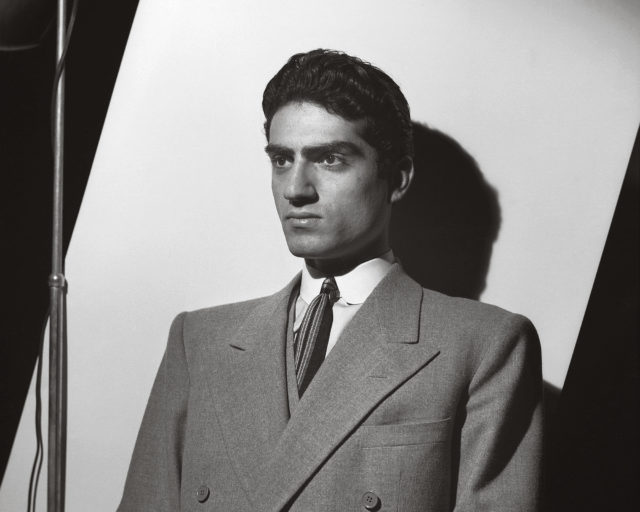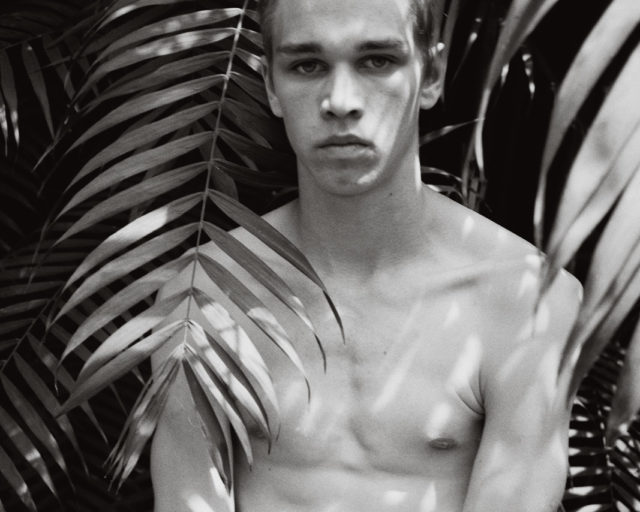Collier Schorr, Image for Saint Laurent women’s summer campaign, 2017
Celebrated in the worlds of art and fashion, Collier Schorr has pushed photography to examine desire, sexuality, and beauty. From her work with teenage wrestlers, to her provocative advertising campaigns, to her exploration of the artist-muse relationship, she has exposed the fluidity and ambiguity of gender. In her images, boys appear girlish, and vice versa. Now sought after for her signature command of the gaze, Schorr’s interrogation of identity has broad reach—and great influence—in the pages of fashion magazines. Here she speaks about the evolving language of the fashion image and how her work challenges convention.

Matthew Higgs: I am going to start with a quote you put on your Instagram feed. It says: “For anyone who wonders why I wanted to make fashion pictures, now you know.” And there is the hashtag #humanityvisibilityequalspower. What animated that? I think it’s worth mentioning that this conversation is taking place two days after Trump’s executive order on immigration.
Collier Schorr: For me, Instagram is a dual platform for showing your work and for showing what you stand for. The picture I made for Saint Laurent, which accompanied the post, was more typical of a documentary picture than a fashion advertisement. Any one element could be seen as typical, but the models were styled and encouraged to perform and play outside of what is traditionally seen: heteronormal women.
We all know that fashion is theater. But it felt like a real moment when I was with those models, Selena Forrest and Hiandra Martinez. Because I was working alongside filmmaker Nathalie Canguilhem, who was also directing them, I could watch as though I were a voyeur. Or, more correctly, there was a performance that seemed to be happening outside of my command. I wasn’t prepared for what it would feel like to see that image as a billboard. It took me back to when I first started making art. I wanted to essentially make a billboard in a gallery that talked about visibility and representation at a time when there was no real lesbian representation in the art world.
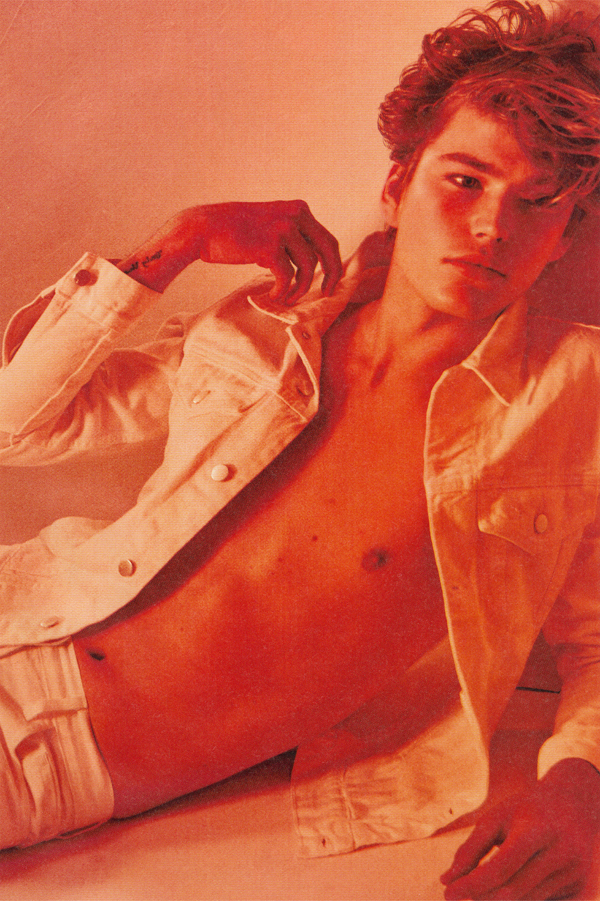
Higgs: Your imagery circulates in the context of both the art world and the larger world of fashion. How would you characterize the differences between these cultural, social, and, I guess, political spheres?
Schorr: They are both places where you have an audience. I don’t really distinguish between the two audiences, because for the most part, they are the same people. More people look at advertising than go to galleries. But everybody who goes to a gallery looks at advertising.
Higgs: Do you think there’s a resistance, still, from the art context to artists who choose to work in the realm of fashion?
Schorr: I’ve always dealt with resistance, though not based on commercial work, but on making too many pictures of men and being seen as romantic. Or based on being an American artist working in Germany. Or not showing in Germany because the work was too American or because it was too dangerous. I’ve never had “permission” or been associated with a collective or a movement. The politics of the work left people uncertain of my identity. Was I a gay male? If I had been a gay male, I think there would have been more support for the work, because there is a tradition of gay men making work about male beauty.
Higgs: But that’s sort of the uncertain nature of the work in its totality. It remains disruptive to the stability the art world has sought.
Schorr: The last gallery show I did, 8 Women (2014), which was seventy percent archival commissioned work and thirty percent work that I made before I started doing fashion, was the most successful show I’ve had. It sold the most. It sold to museums. I walked away thinking, “Oh, of course it did well. They’re pictures of women, and that’s always been a comfortable spot for art.” I did feel like I was being radical by bringing in commercial work, but I was being really traditional by bringing in female nudes.
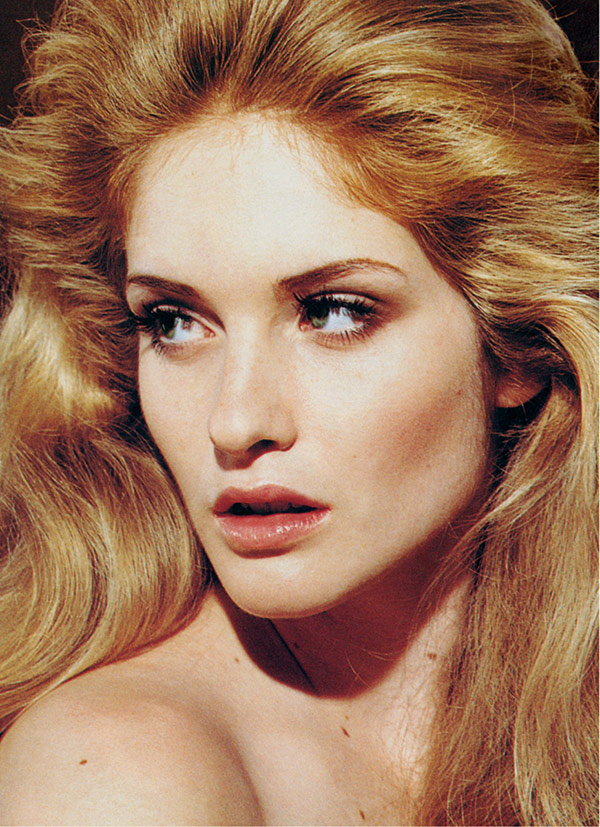
Higgs: It seems almost every decade there’s an attempt to align or embrace the fashion image in the art world. There are exhibitions that address this, and everyone feels like it’s been done, and then a decade later it’s addressed again. Whereas now it seems it’s at its most interesting, most widespread, and hopefully—or potentially—most complex.
Schorr: In terms of destabilizing, my situation might be the result of not having an identity as an artist, a photographer, painter, et cetera. I became an artist really—I wouldn’t say “by accident,” but I didn’t study art. I didn’t train. I just had friends who were artists, and I worked in a gallery. I thought I was a writer. And I made work simply because I thought that the photo- and text-appropriation world made it possible for somebody to make something without having any talent.
I was working for Peter Halley and Richard Prince, and I had the opportunity to curate a show at 303 Gallery of friends of mine. I put myself in the show because there was a hole, a kind of representation, or protest, that wasn’t yet included. So I appropriated fashion imagery. It was a way of interacting with those images that I was drawn to from magazines. What I’m doing today is still the same thing. I never believed in a high-art position because I never fantasized about being an artist.
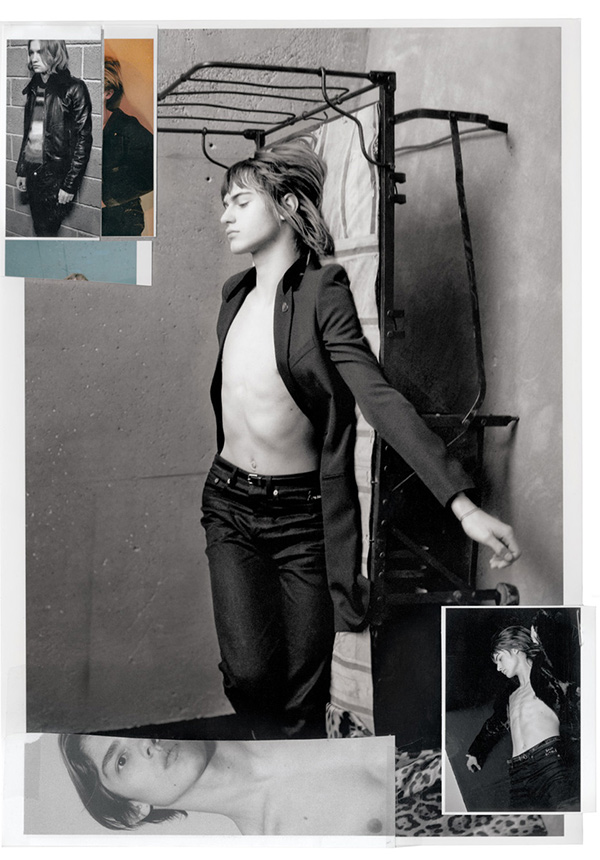
Higgs: But a distinction would be that you’re producing those images now, as opposed to working with those images.
Schorr: Well, yes and no. My current Saint Laurent men’s campaign is collage. The images were shot as an advertising campaign, but by printing them out and cutting them up, they became commentary, a secondary text breaking down an original, static conceit. It’s an infiltration of representation, by bringing together a bunch of pictures made under one umbrella to create a dialogue on representation. The clothing is cut up, cut out; the characters become more important and have more authority. As though I were taking some Guess ads out of Vogue from 1989 and collaging them for an artwork. That was the proposition of my show 8 Women—images go out into the world in magazines, and then I take back those that I want to have a second comment on. I restage their being looked at.
Higgs: The commercial imperative of the fashion business dictates that it’s constantly in flux. Then there’s the market-driven flux, and the commercial realities of fashion. Is it possible to think about that when you’re trying to create an image within those structures?
Schorr: I think almost everything that’s bad about working in fashion is also good, depending upon the day. The fact that it moves. The fact that it’s disposable. The fact that you are so invested in something that you’re willing to have a huge fight over it. Then it gets thrown in the garbage. No matter how bad or no matter how good a picture is, it evaporates after six months. It’s not enshrined. I guess I keep what I love, by putting it into a frame.
Higgs: In the work you’ve done with Saint Laurent, do you have increasing license to make—this is a crude way to put it—more complicated images?
Schorr: I have the encouragement to do that, and that’s very rare. The designer at Saint Laurent, Anthony Vaccarello, was very interested and invested in seeing pictures come from the artist’s imagination rather than from the position of merchandising.

Higgs: To return to #humanityvisibilityequalspower, that Instagram hashtag, what do you think about recent shifts in fashion casting and the bodies we’re seeing in this context?
Schorr: There is a real push toward diversity, but I think the fashion world has treated diversity in casting as a smoke bomb, because there is very little diversity in production. There are very few black fashion photographers in mainstream magazines. There are not that many black designers. But the casting revolution has been great because it’s releasing people who were stuck having to be represented by a certain ideal of beauty. I’m still very much concerned with the general ways I/we present women and sell an idea about them. How to shift what objectification does, how it functions. I’m suspect of merely propping up a picture by suggesting the woman has power.
Higgs: How do you approach the space of editorial work? To me, it’s substantially different from your approach to making a book, or making an exhibition, or even working with a client like Saint Laurent. The continuous narrative of editorial opens up a different agenda.
Schorr: For me, the best-case scenario of editorial work is being in a kind of consensual relationship with somebody else in which I can explore who they are, what they look like, and why they’re desirable.
Higgs: And the other person is the model?
Schorr: The other person is the model. Sometimes it’s a fleeting relationship, and sometimes it’s a sustained relationship. I’m really interested in a certain kind of seduction or flirtation. Like, you’re at a club, and you find your person, and you make this conversation, and then you get to do everything you want with them in this very consensual way. We fall in love with someone who is in love with themselves, and then we fall in love with our version of them. They can love you for a minute for recognizing them. Then some kid rips it out of a magazine, puts it on their bedroom wall, and has someone to dream about.

All photographs © the artist and courtesy 303 Gallery, New York
Higgs: The early weeks of the Trump administration left many people—and commentators, in the broader sense, including artists—stunned. How do you see fashion in relation to the current political reality?
Schorr: I’ve always had a really simple idea about what I wanted for my fashion pictures, because I think that they can only do so much based on the fact that it’s all fake, for the most part. Is it intimacy? Is intimacy a kind of gaze of empowerment, inclusion, and warmth?
Fashion basically promised me one day I would have a girlfriend, and she might be like that model in a sailor shirt with short bleached hair. She might not. But I could fantasize about it. And, at the same time, I could be repulsed by fashion images. I could be hurt by fashion images. And, I could be scarred by fashion images. I wanted to replace the pictures I found alienating with my pictures, so that I would somehow create a healthier pictorial environment for kids.
To continue reading Matthew Higgs’s interview with Collier Schorr, buy Aperture Issue 228, “Elements of Style,” or subscribe to Aperture and never miss an issue.












